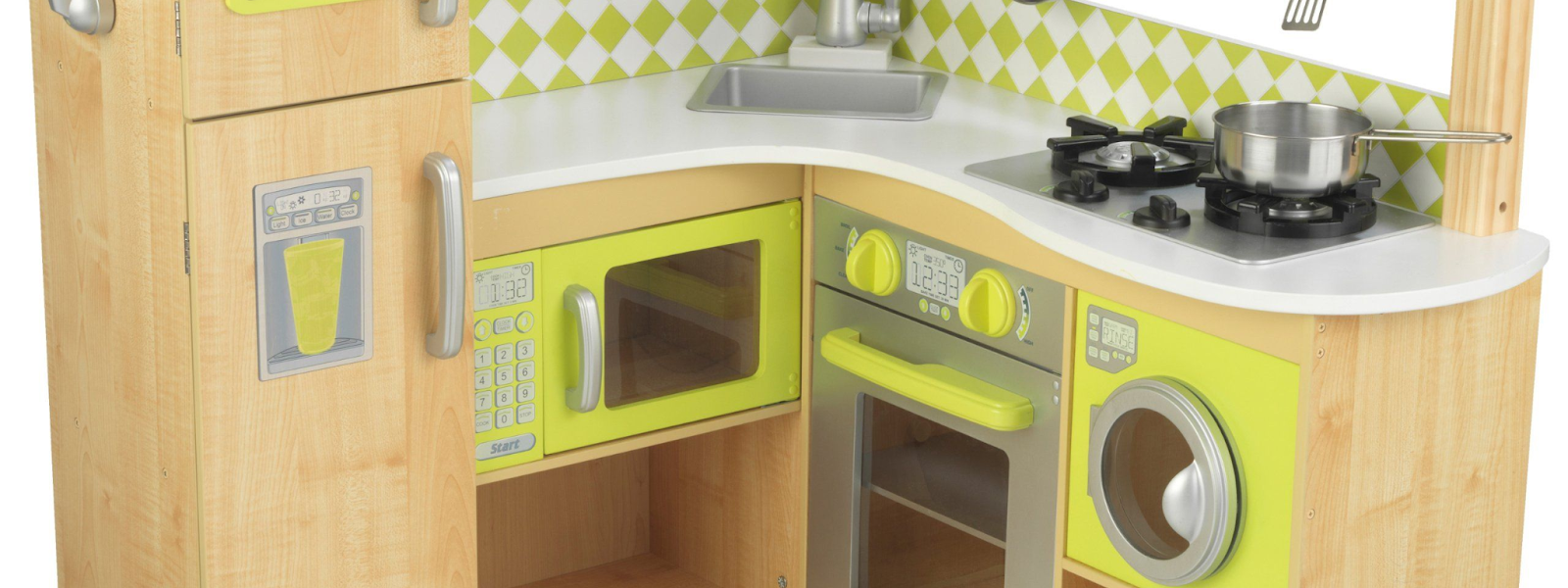Child’s kitchens, also known as play kitchens, have become a staple in homes and early childhood educational settings. These miniature versions of real kitchens offer a world of imagination, creativity, and learning for children. Whether it’s pretending to cook a meal, hosting a tea party, or simply organizing toy food.
A child’s kitchen provides endless opportunities for play that can also foster cognitive and social development. This article will explore the benefits of child’s kitchens, key features to look for when purchasing one, popular models, and how to enhance the play experience with accessories and activities.
Benefits of a Child’s Kitchen
Encourages Imaginative Play: Imaginative play is crucial for a child’s development, and a child’s kitchen is the perfect tool to stimulate it. By pretending to cook, serve, and clean, children can create their own stories and scenarios. This type of play helps them develop problem-solving skills, creativity, and the ability to think abstractly.
Promotes Social Skills: A child’s kitchen is an excellent way for kids to learn and practice social interactions. When playing with others, children learn to share, take turns, and communicate effectively. They might pretend to be a chef taking orders or a parent preparing a meal, roles that encourage empathy and understanding of social norms.
Enhances Language Development: Through play, children are exposed to new vocabulary related to cooking, food, and kitchen tools. They learn to name ingredients, describe actions, and express themselves verbally. This language development is critical for early literacy and communication skills.
Key Features to Consider When Buying a Child’s Kitchen
Size and Space Requirements: Before purchasing a child’s kitchen, consider the size of the space where it will be placed. Child’s kitchens come in various sizes, from compact versions suitable for small apartments to larger, more elaborate setups that may require a dedicated playroom.
Materials: Child’s kitchens are typically made from wood, plastic, or a combination of both. Wooden kitchens tend to be more durable and environmentally friendly, while plastic kitchens are often lighter and easier to clean. Some parents prefer wooden kitchens for their aesthetic appeal and longevity.
Design and Features: Modern child’s kitchens come with a range of features that can mimic real kitchen appliances, such as working knobs, lights, and sounds. Some even have water dispensers, ice makers, and ovens that light up. Consider which features will be most engaging for your child and how they align with their interests.
Popular Child’s Kitchen Models
KidKraft Ultimate Corner Play Kitchen: The KidKraft Ultimate Corner Play Kitchen is a top choice for many parents due to its comprehensive design and realistic features. It includes a refrigerator, microwave, oven, and dishwasher, all with working doors and knobs. The corner design makes it space-efficient while providing ample play areas.
Best Chef’s Kitchen Playset: The Step2 Best Chef’s Kitchen Playset is ideal for smaller spaces. This kitchen is made of durable plastic and includes electronic sounds, a stove, and a working phone. It’s a great option for toddlers and younger children due to its compact size and interactive features.
Melissa & Doug Wooden Chef’s Kitchen: Known for their quality wooden toys, Melissa & Doug offer a Wooden Chef’s Kitchen that is both sturdy and stylish. This kitchen includes a refrigerator, freezer, oven, and microwave with ample storage space. Its neutral color palette makes it a good fit for any room decor.
Tips for Parents
Supervise and Guide: While child’s kitchens are designed to be safe, supervision is still important, especially for younger children. Guide them on how to play safely, such as using the toy knife properly or not putting small objects in their mouths.
Rotate Toys: To keep the play kitchen interesting, rotate the toys and accessories periodically. Introducing new items or changing the setup can refresh your child’s interest and encourage them to explore new ways of playing.
Encourage Real-Life Cooking: As your child grows, involve them in real kitchen activities. Allow children to assist with basic duties like preparing the table, cleaning the veggies, and stirring ingredients. This can be a natural extension of their play and can instill a love for cooking.
FAQs
Can a child’s kitchen egg cooker be used with real eggs?
No, a child’s kitchen egg cooker is a toy and is not designed for use with real food, including real eggs. These toys are meant for pretend play only and should not be used for actual cooking.
Where can I buy a child’s kitchen egg cooker?
Child’s kitchen egg cookers can be found in toy stores, department stores, and online marketplaces like Amazon, Walmart, and Target. When purchasing online, make sure to read reviews to ensure the product meets safety standards and customer satisfaction.
How do I clean a child’s kitchen egg cooker?
Cleaning a child’s kitchen egg cooker is simple. Since it is a toy, you can wipe it down with a damp cloth and mild soap to remove any dirt or grime. Avoid submerging electronic parts in water and ensure the toy is thoroughly dry before allowing children to play with it again.
Conclusion
A child’s kitchen is more than just a toy; it’s a powerful tool for learning and development. From fostering creativity and social skills to enhancing fine motor abilities and introducing basic math and science concepts, the benefits of a child’s kitchen are extensive. By choosing the right model, adding engaging accessories, and encouraging interactive play.
You can create a rich and educational experience that will entertain and teach your child for years to come. Whether you’re a parent, grandparent, or educator, investing in a quality child’s kitchen is a decision that will pay off in countless ways.
To read more, Click Here .


